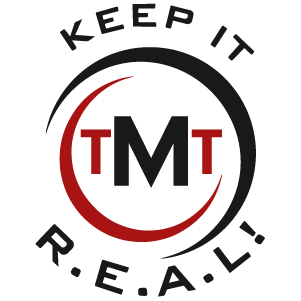The journey towards both personal and professional success is often laden with challenges. The ability to set and achieve meaningful goals is not just a skill but a necessity that can significantly impact our business outcomes. Through my own experiences and the challenges I’ve faced, I’ve learned some invaluable lessons on effective goal setting and execution.
Subscribe to the TMT YouTube channel here
The Importance Of Effective Goal Setting
When we set goals effectively, we do more than outline our aspirations; we also lay down the steps necessary to turn these aspirations into reality. This process enables us to focus our efforts, align our teams, and efficiently allocate our resources. It also provides a benchmark against which we can measure our progress, ensuring that we remain on track and make adjustments as needed.
Think of goal setting as setting the course for a ship. Without a clear destination and a map to guide it, even the most well-equipped ship will drift aimlessly. Similarly, an MSP without clear goals will struggle to harness its resources and energies effectively.
The Five Essential Elements Of Effective Goal Setting
Each element of effective goal setting is crucial and serves a unique purpose in ensuring that we not only set goals but also are equipped to achieve them:
1. Clarity Of Outcome
Clarity is the cornerstone of effective goal setting. We must define what success looks like with as much precision as possible. This clarity helps eliminate ambiguities and focuses our efforts on what truly matters. For example, rather than simply aiming to “increase revenue,” a more effective goal would be to “increase monthly recurring revenue by 15% within the next 12 months.”
2. Compelling Reasons
Behind every successful goal, there is a compelling reason that drives it. These reasons provide the motivation and the emotional charge to persevere when obstacles arise. For instance, the goal to expand services might be driven by the desire to provide clients with comprehensive solutions that improve their business operations, thus enhancing customer satisfaction and retention.
3. Detailed Plans
A detailed plan acts as a roadmap for achieving our goals. This plan should include specific steps, milestones, resource allocations, and deadlines. It’s essential to approach this plan like a project manager, outlining each phase of the initiative and the expected outcomes. The plan must also be flexible enough to adapt to changes and obstacles along the way.
4. Measurement Systems
To know if we are moving in the right direction, we need systems in place to measure our progress. These systems should include both leading indicators (predictive measures that show how likely we are to meet our goals) and lagging indicators (outcome measures that reflect the results of our efforts). For example, if the goal is to improve customer service, leading indicators might include the number of customer service training sessions completed, while lagging indicators might be customer satisfaction scores.
5. Accountability Systems
Accountability ensures that we remain committed to our goals. This can involve regular check-ins with a mentor, updates to a peer group, or even public commitments to stakeholders. Accountability partners can provide encouragement, offer constructive criticism, and help us adjust our strategies as needed. They serve as both a sounding board and a motivational force.
Together, these elements create a robust framework for setting and achieving goals. They ensure that our goals are not just wishes but commitments backed by action and accountability. By mastering these elements, MSP owners can significantly improve their operational effectiveness and business success.
Standards Vs. Goals
Understanding the difference between standards and goals is essential for any MSP owner who aims to consistently achieve high performance. While goals are targets we set to achieve specific outcomes, standards are the benchmarks that dictate the minimum acceptable level of performance. They represent our commitment to maintaining a certain quality of work, regardless of external circumstances.
Defining Standards And Goals
- Goals are specific objectives we strive to accomplish within a set timeframe. They are often ambitious, serving as a challenge that pushes our capabilities and resources. For example, a goal might be to launch a new cybersecurity service within the next quarter.
- Standards, on the other hand, are the practices and behaviors we adhere to daily. They define the “normal” level of performance and ensure stability and reliability in our operations. A standard might be the consistent delivery of high-quality customer support, measured by specific performance metrics like response time and customer satisfaction rates.
Importance Of Standards In Achieving Goals
Standards play a critical role in achieving goals by providing a foundation of consistent practices. They ensure that while we reach for growth and improvement, our base level of service and operation does not suffer. For example, while we may aim to increase sales by 20%, our standard ensures that the quality of service does not decline as we scale.
Standards also act as a safety net, ensuring that even if we fall short of our goals, the quality of our work remains high. This consistency builds trust with clients and stakeholders, reinforcing our reputation and business stability.
The Power Of Purpose In Goal Achievement
The motivation behind our goals can significantly influence our success. A powerful purpose is not just a reason for achieving a goal; it’s the driving force that keeps us committed to our path, especially when challenges arise.
Why Purpose Matters
- Intrinsic Motivation: Goals rooted in deep-seated personal or organizational values carry intrinsic motivation. This type of motivation is more sustainable than extrinsic motivators like financial incentives because it connects to our core beliefs and desires.
- Resilience in the Face of Challenges: When goals are connected to a meaningful purpose, they provide a reason to persevere through setbacks. For MSP owners, whether it’s improving IT infrastructure to help businesses thrive or offering superior tech support to enhance user experiences, a purpose-driven approach fosters resilience and long-term dedication.
Communicating Purpose
- Internal Alignment: Clearly communicating the purpose of a goal within your organization ensures that everyone understands not just what they are doing, but why they are doing it. This understanding can enhance employee engagement and collective effort towards achieving the goal.
- Customer Engagement: When customers understand the purpose behind your services—how they are designed to make their business operations smoother or more secure—they are more likely to engage deeply and remain loyal.
Cultivating A Powerful Purpose
- Alignment with Core Values: Ensure that the purposes behind your goals align with your MSP’s core values. This alignment reinforces your company’s identity and mission.
- Stakeholder Involvement: Involve employees, customers, and other stakeholders in setting goals and discussing their purposes. This inclusivity can provide new insights and strengthen commitment across your business ecosystem.
Incorporating a clear understanding of standards versus goals and the power of purpose can transform how goals are set and achieved in your MSP. By maintaining high standards and aligning goals with powerful, purposeful motivations, MSP owners can ensure sustained growth and resilience in a dynamic industry landscape.


